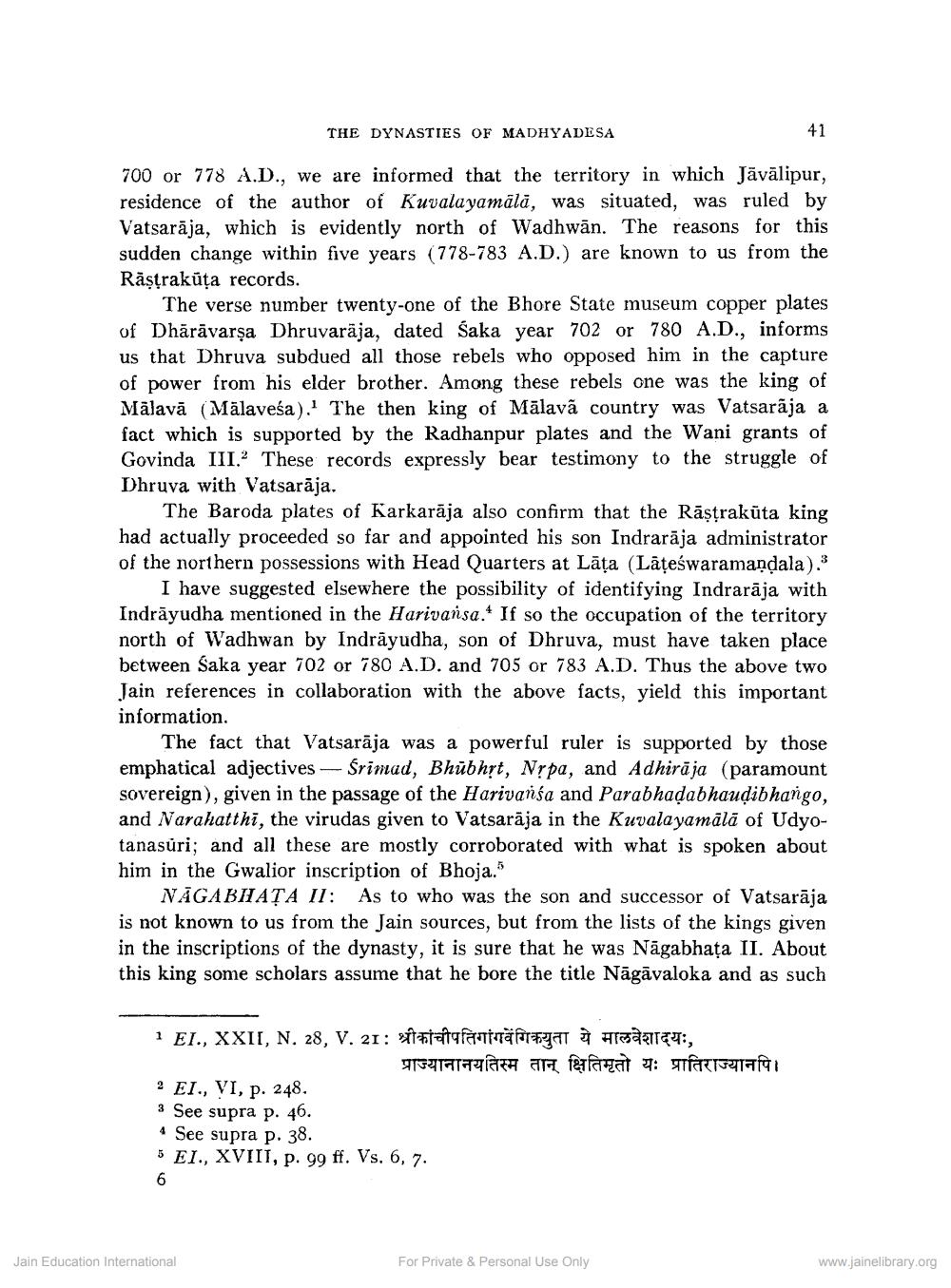________________
THE DYNASTIES OF MADHYADESA
700 or 778 A.D., we are informed that the territory in which Jāvälipur, residence of the author of Kuvalayamālā, was situated, was ruled by Vatsarāja, which is evidently north of Wadhwān. The reasons for this sudden change within five years (778-783 A.D.) are known to us from the Răstrakūța records.
The verse number twenty-one of the Bhore State museum copper plates of Dhārāvarsa Dhruvarāja, dated Saka year 702 or 780 A.D., informs us that Dhruva subdued all those rebels who opposed him in the capture of power from his elder brother. Among these rebels one was the king of Mālavā (Mälaveśa). The then king of Mālavă country was Vatsarāja a fact which is supported by the Radhanpur plates and the Wani grants of Govinda III.2 These records expressly bear testimony to the struggle of Dhruva with Vatsarāja.
The Baroda plates of Karkarāja also confirm that the Rāstrakūta king had actually proceeded so far and appointed his son Indrarāja administrator of the northern possessions with Head Quarters at Lāța (Lāteswaramandala).3
I have suggested elsewhere the possibility of identifying Indrarāja with Indrāyudha mentioned in the Harivansa. If so the occupation of the territory north of Wadhwan by Indrāyudha, son of Dhruva, must have taken place between Saka year 702 or 780 A.D. and 705 or 783 A.D. Thus the above two Jain references in collaboration with the above facts, yield this important information.
The fact that Vatsarāja was a powerful ruler is supported by those emphatical adjectives - Srimad, Bhūbhrt, Nrpa, and Adhirāja (paramount sovereign), given in the passage of the Harivansa and Parabhadabhaudibhango, and Narahatthi, the virudas given to Vatsarāja in the Kuvalayamālā of Udyotanasúri; and all these are mostly corroborated with what is spoken about him in the Gwalior inscription of Bhoja."
NĀGABHAȚA II: As to who was the son and successor of Vatsarāja is not known to us from the Jain sources, but from the lists of the kings given in the inscriptions of the dynasty, it is sure that he was Nāgabhata II. About this king some scholars assume that he bore the title Nāgāvaloka and as such
1 El., XXII, N. 28, V. 21: ftrizitafaniraharjat Asasi,
प्राज्यानानयतिस्म तान् क्षितिमृतो यः प्रातिराज्यानपि। 2 El., VI, p. 248. 3 See supra p. 46. 4 See supra p. 38. 5 EI., XVIIT, P. 99 ff. Vs. 6, 7.
Jain Education International
For Private & Personal Use Only
www.jainelibrary.org




